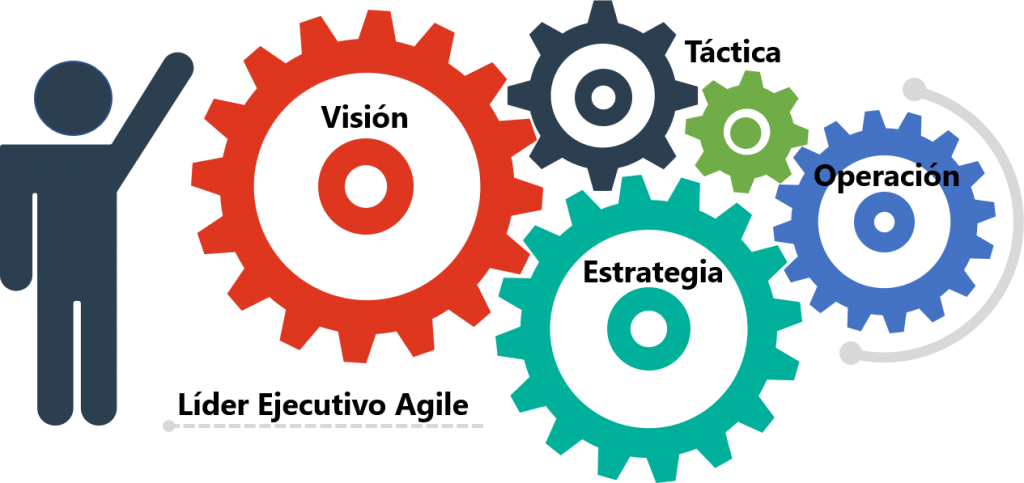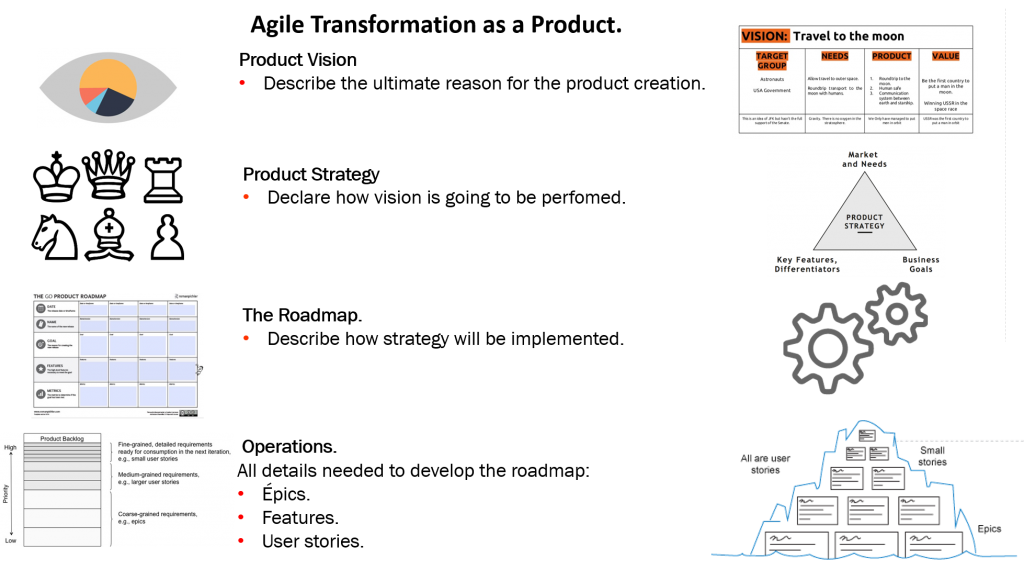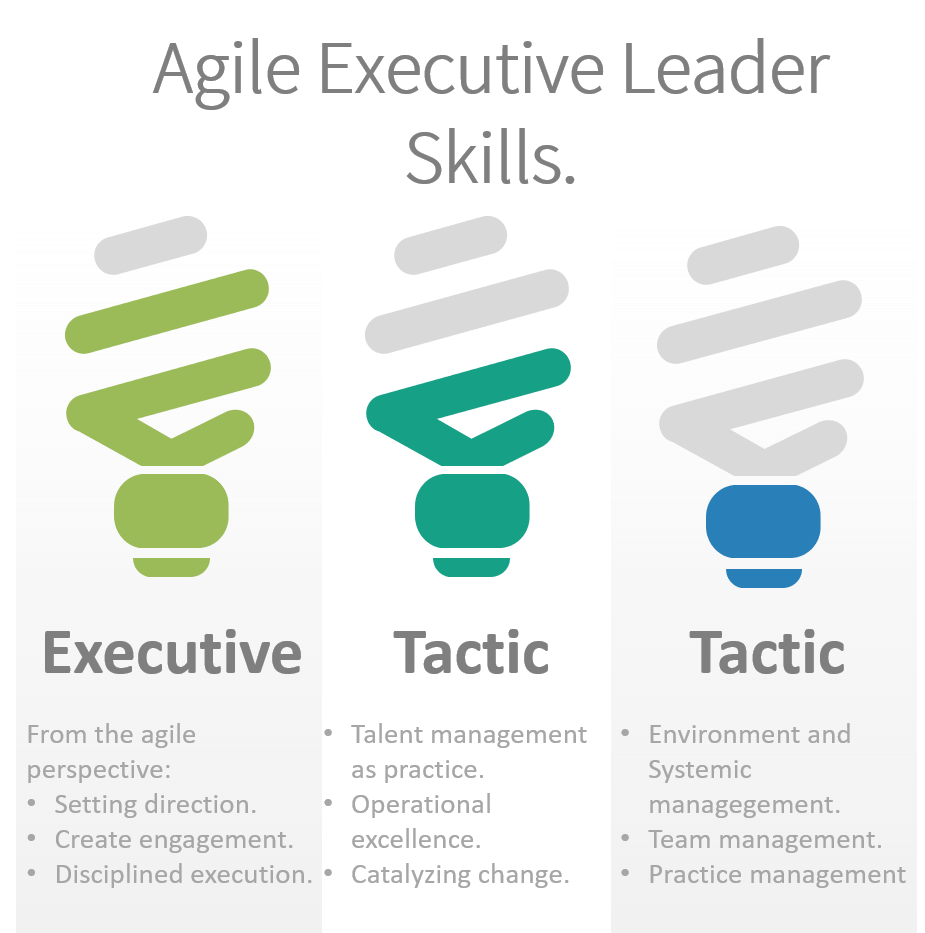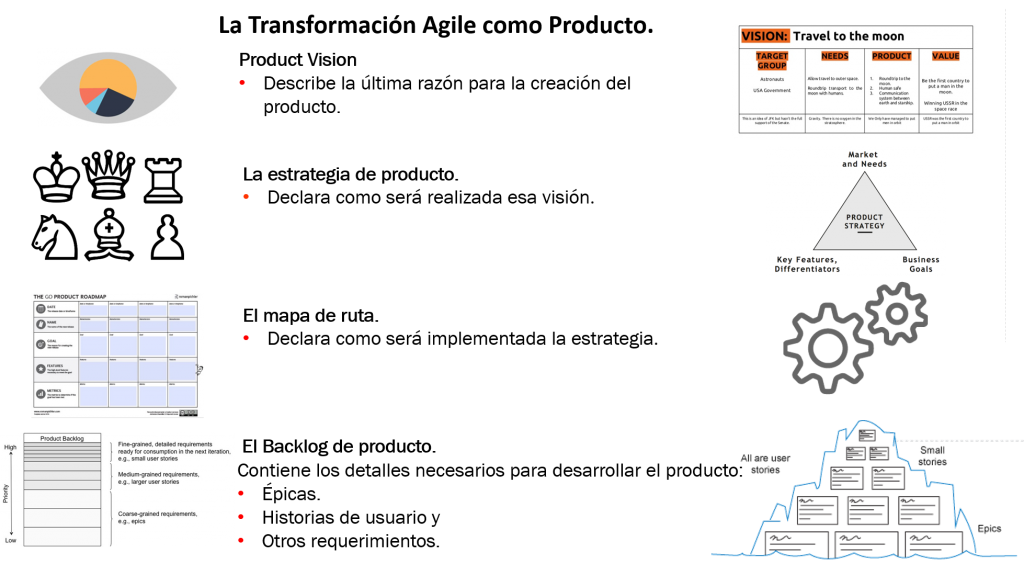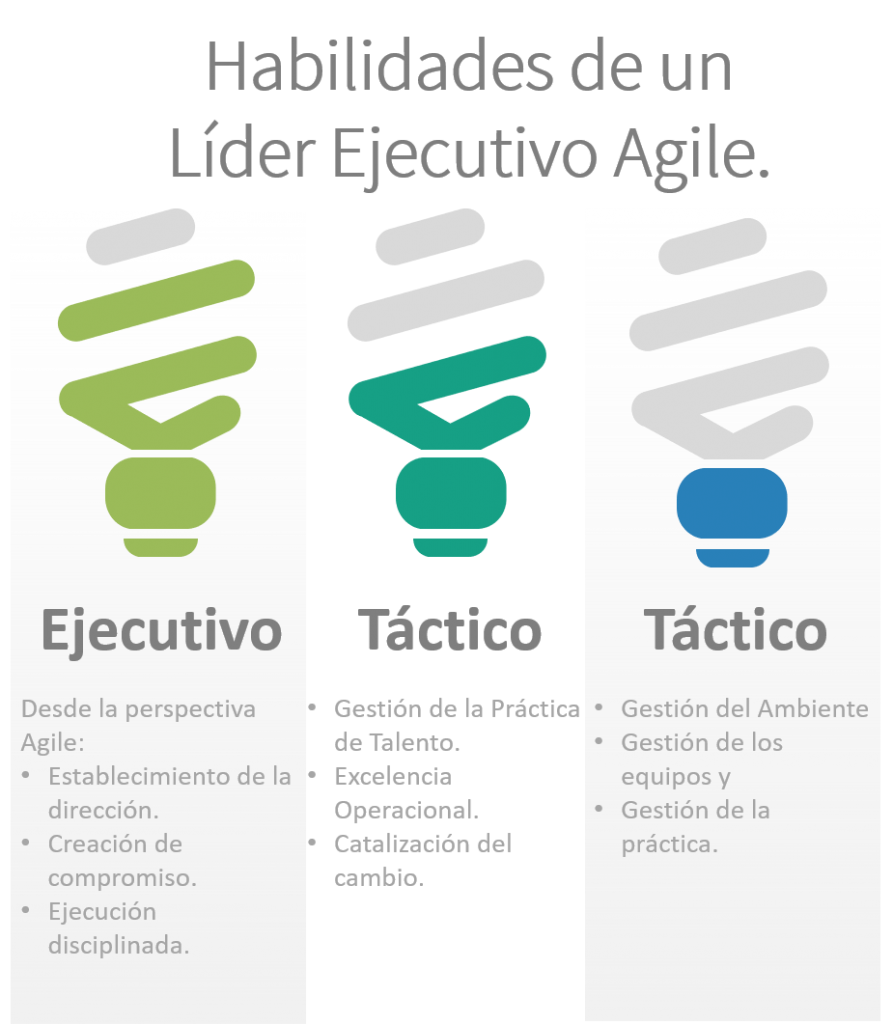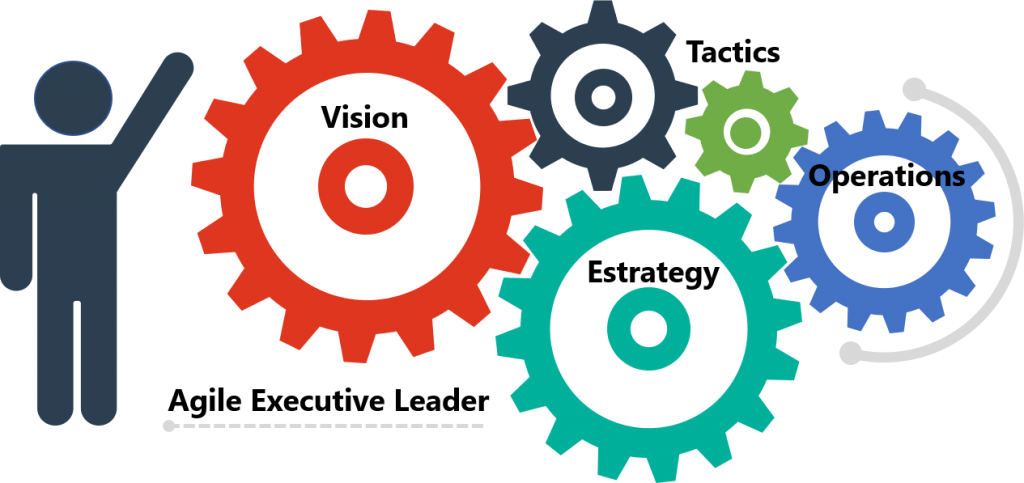
Skills of an Agile Executive Leader.
An agile executive leader should know how agility adds value to the organization and how to create a culture that promotes business agility. In this article we will focus on describing the executive and tactical skills of an agile executive leader.
In the executive category, we find the management skill, which is focused on the co-creation and facilitation of the vision, taking into account the context of and agile organization, evidence-based management, agile organizational design, and portfolio execution processes, up to concrete programs. We also find strategic thinking, in an agile landscape and a VUCA environment. The development of an approach towards adaptability based on risk management and resilience is very important.
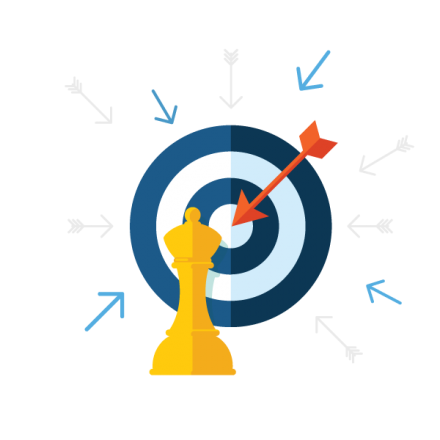
In this same vertical, we have the creation of commitment, which consists in the development of executive presence, under a transformational approach of leadership, lean / agile mindset, values and integrity, principles and valuable practices. Agile organizational empowerment, which consists of knowledge of business agility, as well as the management of investments and expectations necessary to achieve it. Open and restricted communication is a skill of an agile executive leader based on the reinforcement of communication, from the highest level and its relationship with catalysing change, in terms of the adaptive leadership required.
One of the most relevant categories is the alignment of disciplined execution, which consists primarily of focusing on prioritization, creating value and managing changing priorities (Very typical of Business / Product Owners). Responsibility, alignment to priorities, autonomy and delivery of results, are significant issues in this category, let us not forget agile experimentation across the entire organization and executive support, deployment of innovation from the executive level. The issue of responsibility is significant and relevant, it is beyond the limits of this article, for which we recommend the bibliography prior to this series.
In the vertical of the tactic we have,
Talent management as a practice, remember that talent is managed with talent, business scaling is based on the growth of people and the development of collaboration, what we scale is the mindset of our collaborators, remember that a C player managing talent , will never hire someone with greater commitment and performance than him, players B and A. Multiplier leadership, which consists of creating more leaders, empowered people, we focus on the development of people and teams, facilitation, mentoring, coaching, training and feedback, as tools for growth and accelerated learning.
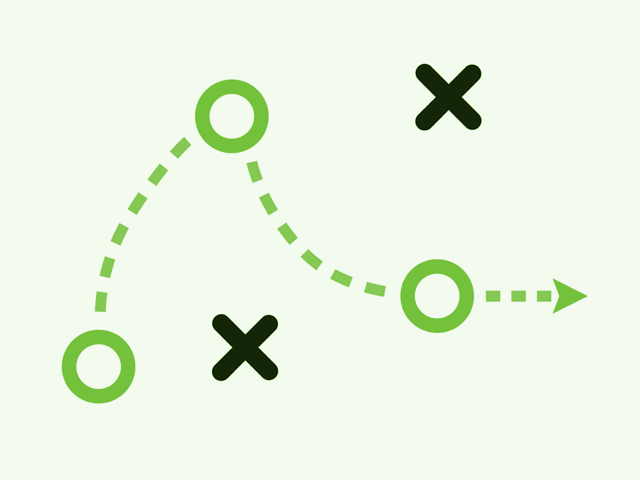
Operational excellence, in this vertical has a mixed, commercial and technological focus, Kanban, Scrum and Organizational Scaling, remember that it is not enough to make it agile, we must also generate mastery in the business domain. Agile Product Management, for the turn management of the strategy, tactics and operation of the product. Emerging, automated product creation and release focused on reducing product placement times – a perverse problem, not just technical, but adaptive leadership, Kaban for discovery and delivery.
Catalyzing change, as agile executive leaders, having the organization as a living complex system, in which we identify the leverage points of sustained change. We must model our adaptive leadership strategy at the highest level, solving wicked problems and agile experimentation for change.
Our next installment will be focused on describing the categories of tactics skills at the service of the operation that an agile executive leader should deploy.
Remember that tactical and operational teams must be left to outline the details necessary to develop our tactics, in a very close time frame, by cycles or sprints.
Miguel Martínez, Julio 2020.
Bibliography:
- Pichler, R. (2016). Strategize: Product strategy and product roadmap practices for the digital age. Miejsce nieznane: Pichler Consulting.
- Scrum Alliance. Certification Types & Tracks. Retrieved July 15, 2020, from https://www.scrumalliance.org/get-certified
- Scrum ORG. Professional Agile Leadership™ Certification. Retrieved July 15, 2020, from https://www.scrum.org/professional-agile-leadership-certification
- Scaled Agile. (2020, July 01). Lean-Agile Leadership. Retrieved July 15, 2020, from https://www.scaledagileframework.com/lean-agile-leadership/
- Koning, P. (2020). Agile leadership toolkit: Learning to thrive with self-managing teams. Boston: Addison-Wesley.
